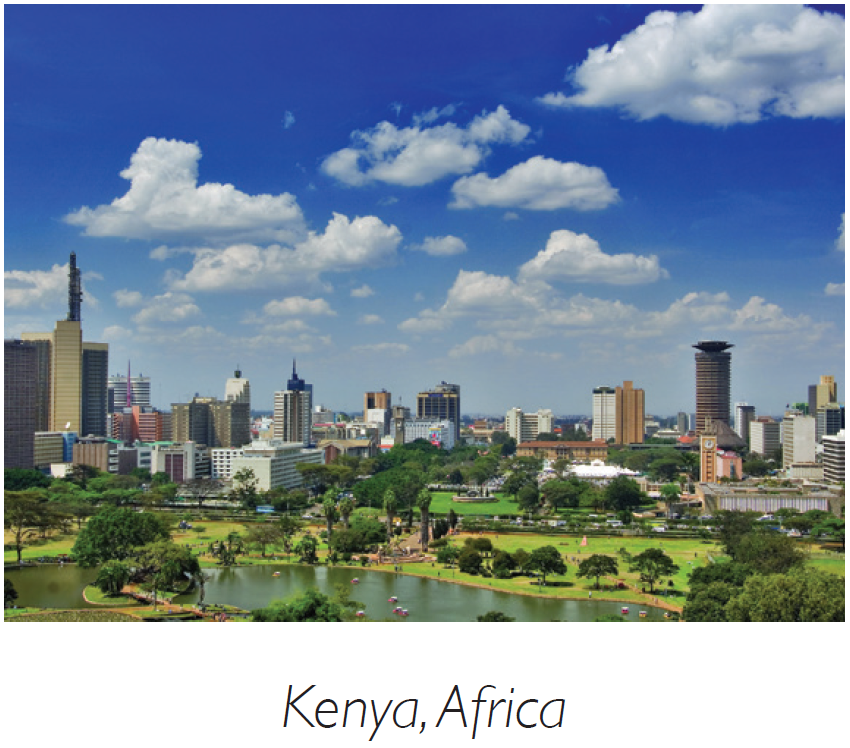Borrower Overview
TriLinc has provided financing to a Kenyan-based freight and cargo transporter that services the port of Mombasa, the largest trade hub in East Africa. Established in 2007 and having started its operations in 2012, the borrower maintains its competitive advantage by being strategically located and serving as a one-stop shop for its customers through offering services such as remote online tracking, weighing of cargo, customs clearance, transportation arrangements, etc. in an effort to increase the port’s operational efficiency. The borrower also owns the largest clinker storage facility of those specialized in bulk cargo services in the region. Through its provision of financing, TriLinc is supporting the borrower’s contribution to the operational effectiveness of the port, which has a direct influence on the competitiveness of Kenya’s businesses, the availability of a variety of goods in the country, and the wider cost of goods in Eastern Africa.
Market Overview

Kenya is classified as a lower middle-income country by the World Bank.1 Between 2010 and 2016, GDP growth rates averaged approximately 6.0%.1 Kenya has emerged as both a technological and financial hub for East and Central Africa and is ranked number one in the world for mobile money transfer and financial services, utilized heavily by small business owners and farmers throughout the country.2 Kenya’s main exports are concentrated in tea, horticultural products, coffee, petroleum products, fish, and cement.3 Conversely, the country’s main imports are focused in machinery and transportation equipment, petroleum products, motor vehicles, iron and steel, and resins and plastics.3
Kenya meets TriLinc’s country standards for its performance across relevant growth, stability, and access metrics.4 As the sixth largest economy in Sub-Saharan Africa5 with a GDP of roughly $70.5 billion, the country benefitted from an estimated $44.4 billion in net foreign direct investment that flowed into the Sub-Saharan region in 2015.6 Sub-Saharan Africa had regional GDP growth of 1.3% in 2016, and is estimated to strengthen to 3.5% by 2019.6
Additional Sustainability & Impact Highlights
- The borrower’s average container release time is 30 minutes, compared to one-half to one-day release time of other inland container depots near the port. The operational efficiency of the borrower allows it to service more customers within the same timeframe of its peers, ultimately enhancing the country’s trading volume and economics.
- In line with the OSHA 2007 Act, workers at the borrower’s clinker storage facility are provided with instruction and training to prevent personal injury, damage of property, and environmental degradation. Additionally, appropriate personal protective equipment is worn by workers and visitors at the site to minimize their exposure to health risks, such as clinker dust.
1The World Bank, World Development Indicators Database, Kenya, 2017. 2Brookings Institution, Africa’s Powerhouse, 2014. 3CIA, The World Factbook, 2017: Kenya. 4There is no assurance that our investment in this company or this market will be successful. 5The World Bank, Data, Sub-Saharan Africa, 2016. 6The World Bank, Global Economic Prospects, June 2017.
The above information is as of the initial date of investment: July 28, 2017.
An investment with TriLinc carries significant fees and charges that will have an impact on investment returns. Information regarding the terms of the investment is available by contacting TriLinc. This is a speculative security and, as such, involves a high degree of risk. Investments are not bank guaranteed, not FDIC insured and may lose value or total value. Some investments may have been made in an investment vehicle that is no longer open for investment. The highlighted investment may or may not have been profitable. There is no guarantee that future investments will be similar.
Want to learn more? Contact Us.
